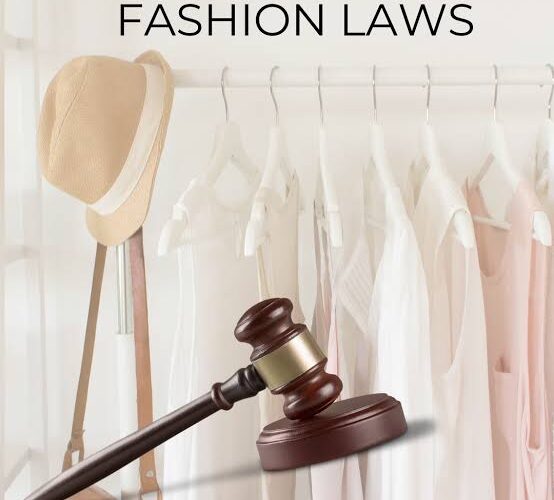Fashion Law: More than Wigs, Gowns, and Intellectual Property
Fashion Law as a field has emerged only over the past few years, tracing its origin to the English Language literature.
Although IP can be considered fashion law’s signature look, the legal framework can also be applicable to business , social and ethical factors that underpin policy and legal developments in the form of contracts, commercial and corporate law , employment law , international trade law and other related subjects.
This field of law i.e Fashion Law distinctively captures the dynamics of modern consumer demand and the digital economy, rapid global communication and complex logistical chains , fundamental human rights , making it essential to embrace this field of law.
The importance of the evolving field of fashion law to business and society as well as the rich research opportunities for legal scholars with a sense of sartorial curiosity must be portrayed well.
The rich and diverse collection of this law goes beyond the surface and can be seen in the following aspects:
- Intellectual Property Protection: Includes unique designs , logos and the branding element that makes each fashion brand or brandmaker look unique.
- Counterfeiting and Brand Protection : Brands are particularly vulnerable to counterfeiting and IP infringement. It is essential to protect the reputation and value of the designers work and hence combat counterfeit products.
- Fashion and Technology: Legal issues related to e-commerce, wearable technology, and data privacy are becoming increasingly important.
- Cultural Appropriation and Ethical Concerns: To ensure that the Brands do not infringe on the cultural heritage of others is salient.
Few notable cases that highlight the vivid issues in Fashion Law are mentioned below:
- Louboutin V Yves Saint Laurent (2012) : The envy of shoe fashionistas around the world , Christian Louboutin’ s signature “ lacquered red sole” provides a particularly elegant example of a trade dress. In this case , the United States Court of Appeals for the Second Circuit held that Louboutin’s distinctive red soles had acquired limited secondary meaning due to their association as a defining feature of the brand
- Chanel v The RealReal (2020) : Luxury fashion house Chanel sued The RealReal , an online luxury consignment platform , for allegedly selling counterfeit Chanel products . This case has brought attention specifically to the issue of authenticity and the resale and estimation of revalue of the luxury goods.
- H&M v Revok (2018) : The street artist Revok sued H&M for copyright infringement , claiming that the company used his artwork in an advertising campaign without permission . The case raised questions about the use of street art in commercial context.
- Dapper Dan and Gucci Collaboration :This was a unique case where fashion designer Dapper Dan known for his knockoff designs in 1980s , collaborated with Gucci. Gucci previously sent a cease – and -desist letter to Dapper Dan for copying its designs , but they later collaborated , which highlights the evolving nature of fashion law and intellectual property.
- Balenciaga v. Steve Madden : Balenciaga filed a lawsuit against Steve Madden , alleging that the brand copied its popular Triple S Sneaker. The case highlighted the issue of fast fashion brands imitating luxury designs.
Nowadays Corporate Social Responsibility (CSR) has become so important that all the top 25 fashion companies in the world based on the revenue have adopted some form of CSR Report , code or similar measure.

Well known designers have trumpeted sustainability in their designs , collection or policies excluding Stella McCartney & Vivienne Westwood.
In conclusion, Fashion Law is a comprehensive and evolving legal field that encompasses a wide range of legal issues and extends beyond the realm of wigs, gowns and intellectual property . It is essential to be well rounded in the knowledge and agile in the approach to address the intricate and ever evolving legal landscape of the fashion industry , fostering ethical sustainable and legally sound practices in a global context.
Author:- Hemika Gala, a Student of Jiterndra chauhan college of law
Ambit of Lease & Critique of Rent Control Acts India





